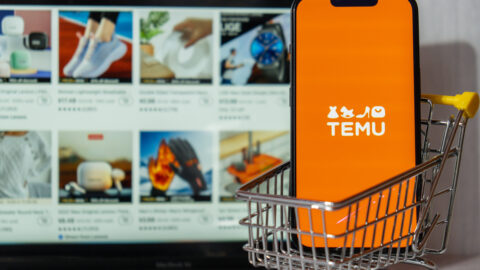Dick’s Sporting Goods CEO Edward Stack made a headline-grabbing statement when he described the retail industry as being in “panic mode” during the company’s recent Q2 earnings call. But even if his comments about retail as a whole are hyperbole, his suggestion that “sporting goods is in the center” of “a perfect storm right now in retail” actually comes fairly close to the mark.
The sporting goods industry has taken some major hits since the end of 2015, most notably the bankruptcy and closing of former sector leader Sports Authority. Brands such as Sport Chalet and City Sports shuttered their operations, while Gander Mountain, Golfsmith and Eastern Outfitters were bought out by larger brands after bankruptcies.
Dick’s Leads In The Standings, But Stalled Growth Causes Concern
Dick’s is the clear leader in the sector, but its Q2 results have clearly rattled the company’s brass, to the point where they decided to lower the outlook for same-store sales and earnings for the rest of 2017. Despite reeling in net income of $112.4 million, well above last year’s $91.4 million, and achieving a 10% sales increase to $2.2 billion, Dick’s downgraded its full year stock price earnings range from$3.59-$3.69 to $2.85-$3.05.
Consolidated same store sales rose 0.1% in the quarter, far below the company’s initial forecast of 2% to 3% growth and even lower than a Thomson Reuters forecast of 1.7% growth. Nor are these sales expected to improve: Q3 same-store sales are projected to drop “in the low single-digits” following a 5.2% jump a year ago. Dick’s stock has fallen more than 50% year-to-date, leading analysts to speculate how the retailer will be able to grow
“Despite Dick’s Sporting Goods remaining the preferred destination when shopping for sporting goods according to the Cowen Consumer Tracker, slowing North America sales growth rates from key vendors Nike and Under Armour, along with increased emphasis on the brands’ own direct-to-consumer platforms will pressure Dick’s Sporting Goods same-store sales growth and margin profile,” said John Kernan, an analyst at Cowen & Co. in a note to clients.
Consumers simply appear to be buying their sporting goods products elsewhere. Dick’s is fighting off this exodus by introducing more promotions and increasing its marketing efforts for the remainder of the year. But this method has frequently done more harm than good in recent years, as traditional retailers in many sectors play catch-up just to sell excess inventory, thus killing margins.
“Reducing prices significantly or discounting may provide a short-term increase in business, but at what cost?” said Brandon Rael, VP of Retail Strategy and Operations at Strategy Consulting in a RetailWire discussion. “The move to aggressive discounting in my opinion simply is an overreaction, and Dick’s challenging business could also be impacted by the overall state of the economy and retail industry. All in all, Dick’s is the last big box specialty athletic business still in operation. The company should continue to curate assortments, provide excellent customer experiences and cultivate relationships with both their employees and customers to have a sustainable and thriving brand.”
Hibbett Exemplifies Sporting Goods Struggles
Hibbett Sports, one of the largest retailers by store count with more than 1,000 locations, has experienced a magnified version of the pain Stack described. Q2 sales fell 9.2% to $188 million, down from $206.9 million in the year-ago period, while same-store sales fell 11.7%. Gross margin dipped from 33% to 28.9% of net sales, primarily due to the promotions and markdowns taken to liquidate excess and aged inventory.
Keep in mind that the retailer was late to the e-Commerce party, only launching its online site in July 2017. But Hibbett, along with Cabela’s and Foot Locker, underperformed in Q2, and all three retailers have cut their full year outlook. Offering an experiential store environment, as Cabela’s does, and a full e-Commerce offering like Foot Locker don’t seem to be providing answers to sporting goods’ retailers problems.
As Amazon Gains Share, Can Other Retailers Recover?
No discussion about retail disruption is complete without mentioning Amazon. While it accounted for less than 5% of all U.S. outdoor and sporting goods sales in 2016 — $5.5 billion out of a total market of $120 billion — the retailer is outpacing the rest of the industry’s 5% growth by 4X. That’s not even the scariest part: Amazon may still be underperforming in many categories that simply haven’t received much attention from its executives yet.
Additionally, major sportwear and footwear brands such as Nike, Under Armour and Adidas are either launching or increasing their sales presence on Amazon. Nike and Under Armour represent 20% and 12% of Dick’s Sporting Goods sales respectively, which could turn out to be a major issue for the retailer if these brands decide to increase sales through other distribution channels.
Cowen & Co. downgraded its financial security rating on Dick’s from “outperform” to “market perform,” saying it will suffer as these suppliers increasingly sell directly to consumers online. With the top sporting goods player failing to inspire confidence from industry analysts, the rest of the field has to focus more strongly than ever on product and experiential differentiation if it wants to escape the fate of bygone competitors.













